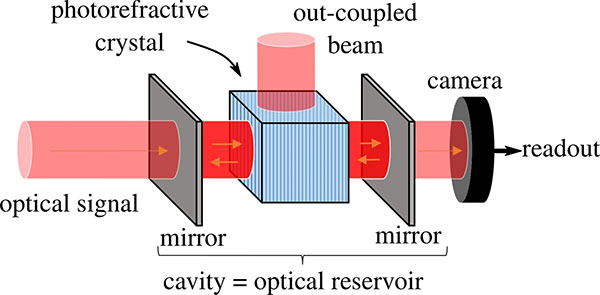Photorefractive Crystals: Harnessing Light for Dynamic Holography and Optical Computing
What are Photorefractive Crystals?
Photorefractive crystals are a class of materials that exhibit a change in their refractive index when exposed to light. This phenomenon, known as the photorefractive effect, occurs due to the generation, transport, and trapping of charge carriers within the crystal upon light exposure. The resulting spatial variation in the refractive index allows these crystals to modulate and manipulate light, making them useful for a wide range of applications in optics and photonics.

Key Properties of Photorefractive Crystals
Photorefractive crystals possess several unique properties that make them attractive for various applications:
- High Sensitivity: Photorefractive crystals can respond to low-intensity light, making them suitable for applications requiring high sensitivity, such as low-light imaging and signal processing.
- Real-time Holography: The photorefractive effect allows these crystals to record and erase holograms in real-time, enabling dynamic holography and adaptive optics.
- Optical Nonlinearity: Photorefractive crystals exhibit strong optical nonlinearities, which can be exploited for applications such as optical switching, signal amplification, and phase conjugation.
- Wavelength Sensitivity: Different photorefractive crystals respond to different wavelengths of light, allowing for wavelength-specific applications and multi-wavelength operation.
Common Photorefractive Crystals
Several materials exhibit the photorefractive effect, each with its own unique properties and advantages. Some of the most commonly used photorefractive crystals include:
Lithium Niobate (LiNbO3)
Lithium niobate is one of the most widely used photorefractive crystals due to its large electro-optic coefficients, high transparency, and good mechanical and chemical stability. It is sensitive to visible and near-infrared light and finds applications in holography, optical data storage, and waveguide devices.
Barium Titanate (BaTiO3)
Barium titanate is another popular photorefractive crystal known for its high photorefractive sensitivity and fast response time. It is sensitive to visible light and is often used in real-time holography, adaptive optics, and optical phase conjugation.
Strontium Barium Niobate (SBN)
Strontium barium niobate is a photorefractive crystal with a high electro-optic coefficient and good photorefractive properties at room temperature. It is sensitive to visible and near-infrared light and finds applications in holographic storage, optical signal processing, and phase conjugation.
Applications of Photorefractive Crystals
Photorefractive crystals find diverse applications in optics and photonics, leveraging their unique ability to modulate light and store optical information. Some key areas of application include:
Holographic Data Storage
Photorefractive crystals can be used as a medium for high-density, volumetric data storage. By recording multiple holograms within the same volume of the crystal, a large amount of information can be stored and retrieved optically. This approach offers the potential for high-capacity, fast access, and long-term data storage.
Adaptive Optics
The real-time holographic capabilities of photorefractive crystals make them suitable for adaptive optics systems. By using these crystals to sense and correct wavefront distortions, adaptive optics can improve the performance of imaging systems, telescopes, and laser beam shaping devices.
Optical Signal Processing
Photorefractive crystals can be used for various optical signal processing tasks, such as optical phase conjugation, beam amplification, and optical pattern recognition. These applications rely on the crystal's ability to manipulate the phase and amplitude of light in real-time, enabling high-speed and parallel processing of optical signals.
Challenges and Future Perspectives
Despite the numerous advantages of photorefractive crystals, there are still challenges to overcome for their widespread adoption. One of the main challenges is the relatively slow response time of some photorefractive materials, which limits their use in high-speed applications. Researchers are actively working on developing new photorefractive materials with faster response times and improved sensitivity.
Another area of focus is the integration of photorefractive crystals with other photonic technologies, such as waveguides, optical fibers, and integrated circuits. This integration will enable the development of compact, high-performance photonic devices for applications in telecommunications, sensing, and computing.
As the field of photorefractive materials continues to advance, we can expect to see new and exciting applications emerge, pushing the boundaries of optical information processing, holography, and adaptive optics.
Further Reading
Optical Review, Photorefractive Effect in Ferroelectric Crystals
Optical Engineering, Experiments with photorefractive crystals for holographic interferometry
